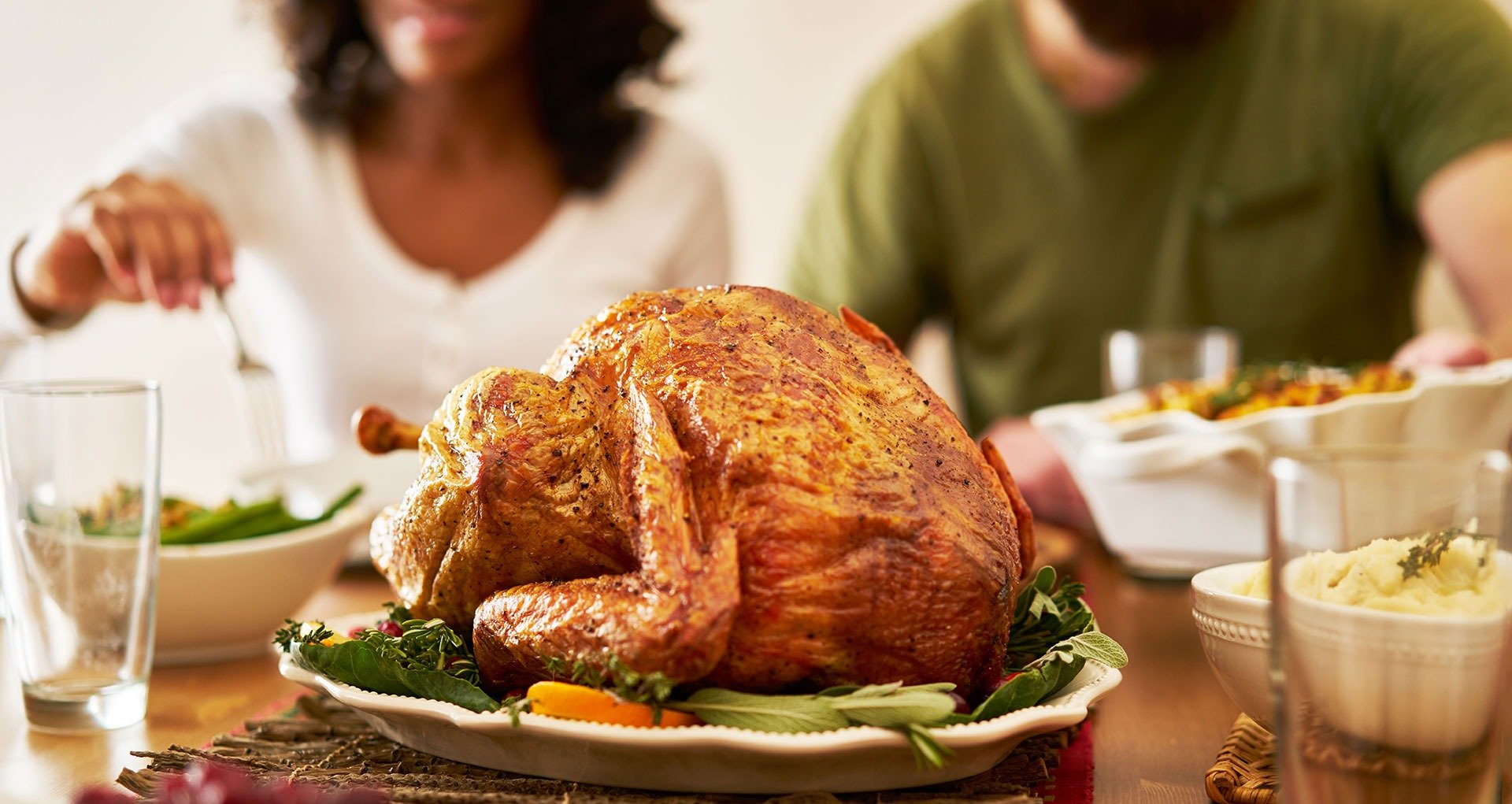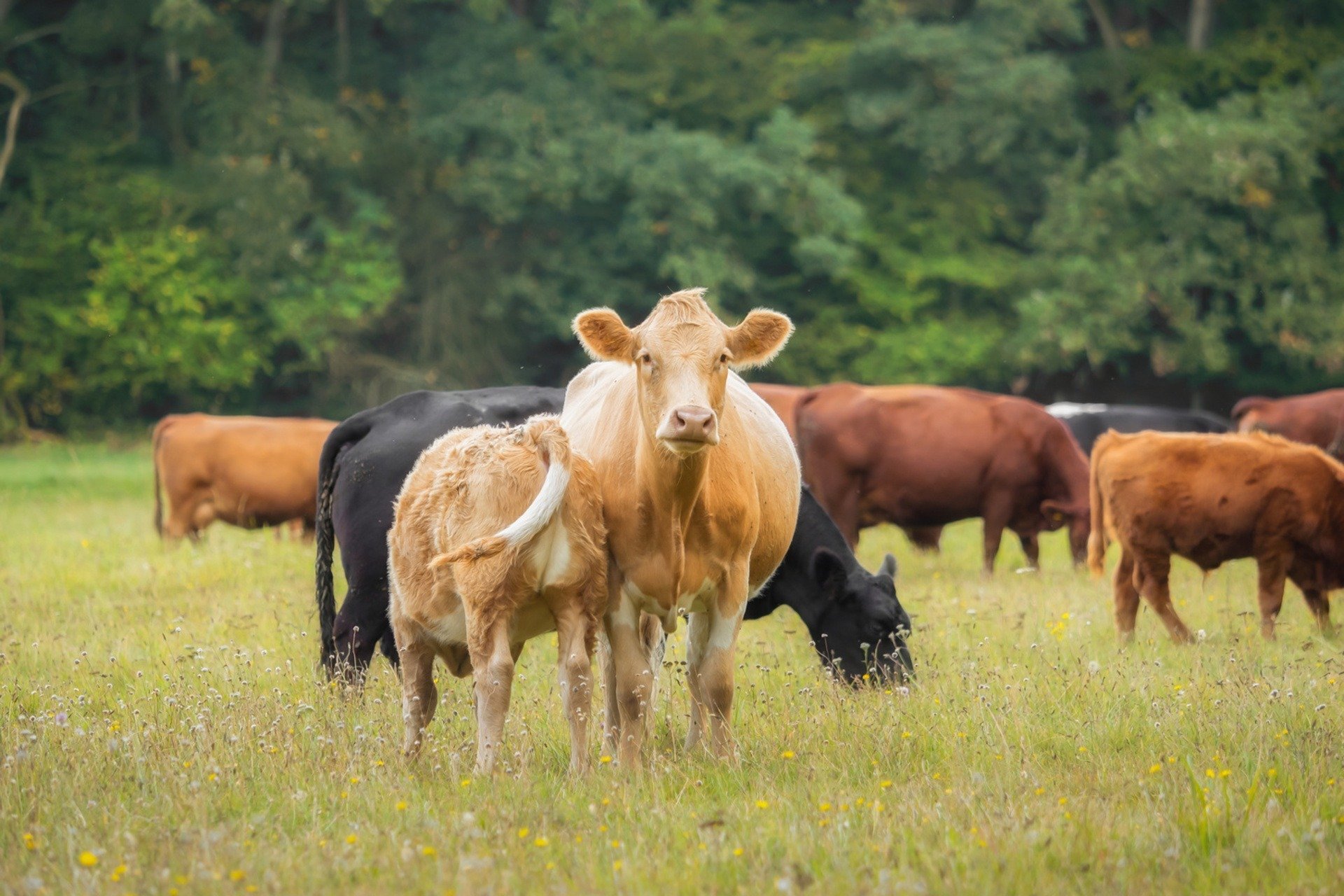What does a resurgence in bird flu mean for the Thanksgiving turkey?
In late 2021, a strain of Highly Pathogenic Avian Influenza (also called HPAI, or bird flu) started spreading rapidly through commercial poultry flocks worldwide, making its way to the U.S. by early 2022. As the virus has spread between U.S. farms, it’s affected more than 60 million birds — most of which have been killed either by the disease or through culls performed to stop it from spreading. With wild birds and even marine mammals worldwide being infected and killed, it’s the biggest outbreak of avian flu in history.
So far, this strain of bird flu shows limited potential to infect humans. But that doesn’t mean it hasn’t had an impact on people: The deaths of millions of birds, mainly egg-laying hens, helped contribute to a massive rise in egg prices during 2022. Turkeys also saw a supply crunch, with wholesale prices rising by a third between November 2021 and November 2022. In total, this outbreak has cost producers more than $1 billion in lost income, and the government has spent more than $660 million managing the spread of disease and compensating farmers. Then there’s the cost to animals: Farmers have turned to increasingly inhumane culling methods that can leave birds suffering for hours.
Most bird flu outbreaks occur during colder months, then die down over the spring and summer, limiting their impact. But this strain ran rampant throughout all 2022, and while new cases finally stopped showing up in the summer of 2023, it was detected once again in early October on turkey farms in South Dakota and Utah. Now that this latest flare-up has spread through several farms in the Midwest, the resurgence of the virus seems to confirm experts’ fears that bird flu, rather than being an occasional disruption as it has been in the past, might now be here to stay.
So will the resurgence of bird flu mean anything for Thanksgiving, a day when people in the U.S. consume more than 46 million turkeys?
In short, no — or at least, not this year. Because turkey consumption is so centered around the holidays, turkey farmers begin raising birds in batches many months ahead in order to meet the demand; most of the birds that will appear on Thanksgiving tables have already been slaughtered and frozen. Since bird flu did ease in the spring and summer of 2023, there are more turkeys on store shelves than there were last year (when the disease continued unabated), leading to lower prices overall.
But that doesn’t mean that the industry is in the clear either: U.S. Department of Agriculture tracking data shows that nearly a million turkeys have been infected or culled since October’s bird flu resurgence, a rapid rise in deaths that brings the total number of turkeys killed since the start of the outbreak to more than 11 million. So far, most recent turkey infections have centered around Minnesota, Iowa and South Dakota. Those areas had been hit hard by earlier waves of the outbreak, and the rapid re-emergence of the disease now suggests that the industry, despite mitigation attempts, is still very vulnerable to further disruption.
11 million
The number of turkeys killed since the start of the current bird flu outbreak in late 2021.
Preventing the spread of bird flu isn’t easy for any kind of poultry farm: Even when birds are raised indoors, it’s hard to wholly exclude wild birds like ducks and seagulls (which can carry the virus asymptomatically) from a farm. This means that conventional farms are just as likely to come in contact with the virus as backyard flocks and pasture-based systems, especially in the spring and fall when wild birds migrate in large numbers. Once introduced, the potential for the virus to spread within a conventional turkey barn — where as many as 10,000 birds live together in a space with just 6 square feet per animal — makes commercial flocks especially vulnerable to bird losses and mass cullings. It also means that commercial barns can act as amplification centers for the virus, which helps explain the dramatic, concentrated uptick in cases in the Upper Midwest.
So far, the USDA and state departments of agriculture have pushed producers to ramp up their biosecurity efforts by frequently disinfecting equipment between uses and limiting visitors and traffic to and from farms. But these attempts have had limited success, and the real game-changer in the fight against bird flu — an effective vaccine — may be off the table for now, not because it doesn’t exist, but because of the potential trade issues mass vaccinations might cause: The meat of vaccinated birds could show the same antibodies as that of infected birds, making it difficult for biosecurity authorities to distinguish between what is safe to import and what should be kept out.
As Vox explains, that makes vaccinations out of the question for most U.S. poultry producers, which ship 18 percent of their products abroad. When France, which has also been hard hit by bird flu, started vaccinating its ducks, the U.S. blocked imports of French poultry as a result. Better vaccines could avoid this problem — but with those still in development, waiting for countries to implement the vaccination standards that could actually protect flocks is a stubborn game of chicken.
Without better biosecurity options, U.S. turkey producers are at risk of another catastrophic winter. In this context, it’s worth examining the conditions that have made conventional turkey flocks so vulnerable to bird flu in the first place. The factory farm system would have health implications for any bird, but when it comes to infectious disease, turkeys are especially susceptible — compared to broiler chickens, which live for an average of 45 days between hatching and slaughter, turkeys live significantly longer, meaning they have a longer window to be exposed to bird flu and a number of other infections. This is made worse by the crowded conditions in barns, where the buildup of toxic waste gases like ammonia damage lungs, leaving birds very susceptible to infection. As a result, antibiotic use on turkey farms remains stubbornly high: Turkeys receive more antibiotics proportional to their body weight than any other kind of livestock in the U.S., an amount that can only be reduced with changes to the way that they are raised.
Alternative production systems certainly don’t create turkeys immune to bird flu, but they present a less ideal environment for overall disease spread. Birds that can engage in natural behaviors, outside, also exhibit less stress and have stronger immune systems as a result.
Of course, it’s impossible to replicate the productivity of a conventional turkey barn with a more animal welfare-focused system, and that means alternatively raised birds are more expensive than their conventionally raised counterparts. But as demonstrated by the rampage of diseases like bird flu, the full costs of that industrial system don’t make their way onto the price tag. That might change, however, as big outbreaks like this one continue to plague conventional poultry production — perhaps making paying a little more for a better-quality bird this Thanksgiving a little easier to swallow.
Get the latest food news, from FoodPrint.
By subscribing to communications from FoodPrint, you are agreeing to receive emails from us. We promise not to email you too often or sell your information.
Top photo by Юрий Горид/ Adobe Stock.
More Reading
Can scorecards push supermarkets to do better?
December 9, 2024
Manure digesters aren’t clean energy
November 6, 2024
Julie Guthman explains why Silicon Valley will not hack the future of food
November 4, 2024
Everyone's talking about ultraprocessed foods — but what exactly are they?
June 27, 2024
Switching from beef to chicken isn't the sustainability flex you think it is
June 12, 2024
Are natural flavors better than artificial?
May 7, 2024
Is a sweeter story possible for chocolate and vanilla?
April 30, 2024
The ins and outs of vegan hot dogs
April 16, 2024
Jamie Loftus and ‘the naked truth about hot dogs’
April 16, 2024
Nearly a year after USDA approval, lab meat is still off the menu
April 10, 2024


